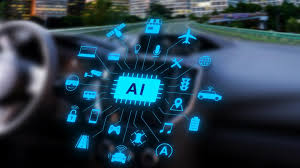ARTIFICIAL INTELLIGENCE IN CAR DESIGN AND ENGINEERING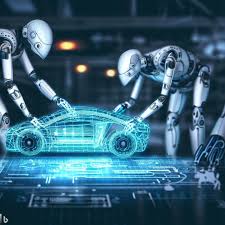
The integration of artificial intelligence (AI) in car design and engineering represents a transformative shift in the automotive industry. AI technologies are revolutionizing how vehicles are conceived, developed, and manufactured, enhancing efficiency, safety, and user experience. This exploration will delve into the various applications of AI in car design and engineering, its impact on the industry, and the future prospects that AI holds for automotive innovation.
The Role of AI in Car Design
AI plays a pivotal role in the design phase of automobile development, helping designers and engineers create more efficient and innovative vehicles. Some key applications include:
- Generative Design
Generative design is an advanced AI-driven process that uses algorithms to explore a vast range of design possibilities based on specific parameters. By inputting variables such as weight, strength, materials, and manufacturing methods, AI can generate optimized designs that might not have been considered through traditional methods. This approach:
- Reduces Material Waste: Generative design often results in lightweight structures that use fewer materials, thus minimizing waste.
- Enhances Performance: The optimized designs can improve the performance and efficiency of components, leading to better overall vehicle dynamics.
- Speeds Up the Design Process: By quickly generating and evaluating numerous design options, AI accelerates the design phase, allowing for faster iterations and refinements.
- Advanced Simulation
AI enhances simulation technologies, enabling more accurate modeling of vehicle performance under various conditions. This includes:
- Crash Simulations: AI algorithms can predict how a vehicle will behave in a collision, allowing engineers to improve safety features before physical testing.
- Aerodynamic Testing: AI-driven simulations can model airflow over a vehicle’s surface, helping to refine shapes for better fuel efficiency and performance.
- Thermal Analysis: AI can predict thermal behavior in electric vehicles, assisting in the design of cooling systems for batteries and motors.
The Impact of AI on Engineering Processes
In addition to its role in design, AI significantly influences engineering processes throughout the automotive lifecycle. Key impacts include:
- Predictive Maintenance
AI algorithms analyze data from vehicle sensors to predict when maintenance is required, helping to minimize downtime and enhance reliability. This involves:
- Data Analysis: AI examines historical maintenance data and real-time sensor inputs to identify patterns indicative of potential failures.
- Enhanced Reliability: By anticipating issues before they become critical, manufacturers can improve the longevity and reliability of their vehicles.
- Cost Savings: Predictive maintenance reduces unexpected repair costs and helps owners manage their vehicles more effectively.
- Manufacturing Automation
AI-driven automation in manufacturing processes is transforming how cars are produced:
- Robotics and Machine Learning: AI-powered robots perform tasks such as welding, painting, and assembly with high precision and efficiency, significantly reducing human error.
- Quality Control: AI systems can monitor production lines in real-time, using machine vision to detect defects and ensure quality standards are met.
- Supply Chain Optimization: AI can analyze supply chain data to predict demand, optimize inventory levels, and streamline logistics, ensuring that components are available when needed.
Enhancing User Experience with AI
AI is also reshaping the driver and passenger experience, making vehicles smarter and more responsive to user needs. Some notable advancements include:
- Intelligent Cockpits
Modern vehicles are increasingly equipped with AI-driven infotainment systems that provide personalized experiences. Features include:
- Voice Recognition: AI-powered voice assistants allow drivers to control navigation, music, and other functions hands-free, enhancing safety and convenience.
- Personalization: AI can learn driver preferences over time, adjusting settings for climate control, seat position, and entertainment options based on individual user profiles.
- Advanced Driver-Assistance Systems (ADAS)
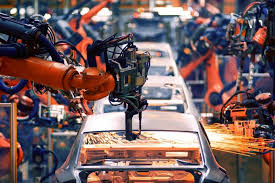
AI plays a crucial role in the development of ADAS, which enhances vehicle safety and ease of driving. Key features include:
- Adaptive Cruise Control: AI algorithms adjust vehicle speed in response to traffic conditions, providing a smoother driving experience.
- Lane-Keeping Assist: AI systems use camera data to detect lane markings and help keep the vehicle centered within its lane.
- Collision Avoidance: AI analyzes data from sensors and cameras to detect potential obstacles, automatically applying brakes or steering to prevent accidents.
The Influence of AI on Sustainability
As the automotive industry faces increasing pressure to adopt sustainable practices, AI contributes to environmentally friendly initiatives in several ways:
- Efficient Energy Management
AI systems can optimize energy use in electric vehicles (EVs) by:
- Smart Charging: AI algorithms can schedule charging times to take advantage of lower electricity rates or renewable energy availability.
- Route Optimization: AI can analyze traffic patterns and suggest routes that minimize energy consumption, extending the range of EVs.
- Sustainable Manufacturing Practices
AI-driven processes in manufacturing can also contribute to sustainability:
- Resource Optimization: AI can identify opportunities to reduce resource consumption in manufacturing, leading to less waste and lower emissions.
- Circular Economy: AI can assist in developing strategies for recycling and repurposing vehicle materials, promoting a circular economy in the automotive sector.
Challenges and Considerations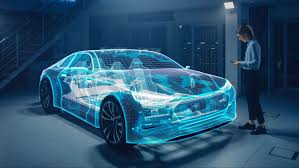
Despite the numerous benefits AI brings to car design and engineering, several challenges and considerations must be addressed:
- Data Privacy and Security
As vehicles become more connected, the amount of data generated and shared raises concerns about privacy and security. Ensuring that user data is protected and that vehicles are safeguarded against cyber threats is paramount.
- Ethical Considerations
AI systems must be designed with ethical considerations in mind, particularly regarding decision-making in critical situations, such as accidents. How AI systems prioritize passenger safety versus pedestrian safety poses complex ethical dilemmas.
- Workforce Implications
The increasing automation driven by AI may lead to job displacement in certain sectors of the automotive industry. While new jobs will emerge in AI development and maintenance, addressing the workforce transition and providing training opportunities is essential.
Future Prospects
Looking ahead, the integration of AI in car design and engineering is poised to evolve further:
- Fully Autonomous Vehicles
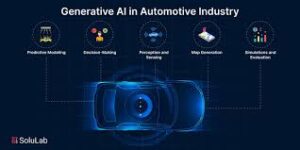
The development of fully autonomous vehicles relies heavily on AI technologies. As AI systems become more sophisticated, the possibility of vehicles navigating complex environments without human intervention is becoming increasingly feasible. This transition will necessitate:
- Advanced Sensor Technologies: Continued advancements in sensor technologies, combined with AI algorithms, will enhance the ability of vehicles to perceive and interpret their surroundings.
- Regulatory Frameworks: As autonomous vehicles become more prevalent, regulatory frameworks will need to evolve to ensure safety and accountability.
- Enhanced Collaboration
The future of car design and engineering will likely see increased collaboration between automotive manufacturers, tech companies, and research institutions. This collaboration will foster innovation and accelerate the development of AI-driven solutions.
- Human-Centric Design
The integration of AI will continue to prioritize human-centric design, focusing on enhancing the driver and passenger experience. As AI systems learn from user interactions, they will become more intuitive and responsive, creating a seamless and personalized driving experience.
Conclusion
The integration of artificial intelligence in car design and engineering is reshaping the automotive landscape, driving innovation and enhancing efficiency, safety, and user experience. From generative design to advanced driver-assistance systems, AI technologies are transforming every aspect of vehicle development and production.
As the industry continues to evolve, addressing the challenges associated with AI adoption will be crucial. By fostering a collaborative environment, prioritizing ethical considerations, and focusing on sustainability, the automotive sector can harness the full potential of AI, paving the way for a future of smarter, safer, and more sustainable vehicles. As we navigate this new frontier, the synergy between human creativity and artificial intelligence will undoubtedly redefine the possibilities in car design and engineering.